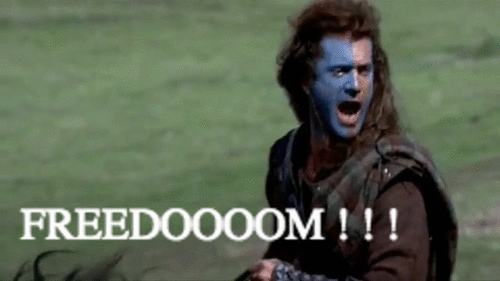Driver’s Ed by Caroline B. Cooney explores abstract contrasts like life versus death, love versus disappointment, normalcy versus unfamiliarity, childhood versus adulthood. But one recurring opposition that seems to be the most prevalent is freedom vs responsibility. In fact, it is a controlling value– as discussed in blog one.
In the book, Remy, Morgan, and their classmates are anticipating and preparing for their driver’s licenses. They think that the day they get their licenses, they will have the world at their fingertips– that they will be free to venture into the world.
The driver’s license is both a symbolic code and a cultural code. It has a literal meaning, as well as a thematic meaning, but also pulls upon experiences that readers encounter as they obtain a driver’s license of their own. These students recognize that this laminated piece of paper allows them to drive, but it also instills upon them this sense of freedom.
These students, Remy and Morgan, recognize that this laminated piece of paper allows them to drive, but it also instills upon them this sense of freedom. It allows them to go out into the world on their own, have experiences of their own without their authority figures watching over them. That is the main conflict that Remy and Morgan come across– being responsible with their freedom.

However, there is always twoness to be found. While the driver’s license grants accessibility to the world, it also comes with great responsibility. These students, specifically Remy and Morgan didn’t recognize their newfound responsibility until it was too late. They wandered blindly into adulthood. In fact, the narrator remarks that,
Remy did not know where she was going, but one thing for sure. She was going there fast (3).
Remy and Morgan took on the freedom that comes with the driver’s license but didn’t realize that they now were responsible not only for their own lives but for the lives of everyone else they encounter on the road. Including Denise Thompson, the woman who died when they took the stop sign. Having this life on their hands made them aware of the of the responsibility that comes with freedom. They now lost the naivety of adolescence and saw the truth of adulthood.

We can even find recognition of the symbolic code within the text:
A small plastic rectangle, her picture to the left, vital statistics to the right… Permission to begin adulthood. Her license. Her ticket out of childhood (149)
As for the cultural code, adolescents yearn for their license throughout their teen years. They dream about driving around, having the ability to go wherever– just as Remy and Morgan do. The desire to drive is something everyone experiences. And so is the fear and the burden of the responsibility of adulthood and of maturity. As we read in Seconds, Katie was also afraid of growing up and of facing her responsibility. (Check out those blogs!) Any book that successfully develops its characters will at one point see a character that is afraid of growing and facing responsibility– like Remy and Morgan. And often, they probably are waiting for freedom with open arms, ignorant to their responsibility, again like Remy and Morgan, but also like Ariel in “The Little Mermaid” as in the gif above. These codes will work together most in “coming-of-age” scenarios.
Of course, these are not the only codes to be found within this text. However, this feels to me as though it is the outer layer. From here, the symbol of the stop sign and the idea of “normalcy” and the concept of a “driver” can be examined, just to name a few other codes that lie within the text. All of these are interrelated. I have just laid down the foundation. The most important thing to remember is the idea of twoness. After all, for every action, there is an equal and opposite reaction.

First off, Braveheart and Little Mermaid gifs, two of my favorite movies ever. Love it! This blog hits all the main points that the story is telling us about Remy and Morgan. Upon reading your blog when you mentioned the quote from the text about the small plastic rectangle it made me realize how certain objects or items mean so much more in this story (same in real life). The license is the symbol of freedom and the stop sign a symbol of dread and guilt. Freedom and guilt are huge in Driver’s Ed and these items haunt the main characters in almost every chapter.
LikeLike
Overall, great blog post! I really like how you put into perspective of just how much the main characters anticipated receiving their driver’s license, but did not really take into account of the responsibility that comes along with it. A driver’s license does in fat stand for freedom and responsibility, but it also stands for growing up and leaving childhood behind which was something that the main character’s did not realize. There is an increased pressure on people to obtain their driver’s license as soon as possible and it is treated as some sort of prize that must be won. As you mention in your blog post, “The desire to drive is something everyone experiences. And so is the fear and the burden of the responsibility of adulthood and of maturity. ” that is cetainly true. The main characters felt that they could carry out childish actions (like steal a stop sign), and still be viewed as children and their actions would not have “adult” consequences.
LikeLike
I thought it was very interesting how you developed the idea that a driver’s license is both a symbolic and a cultural code. This actually helped me to re-frame the way I view the text, and gave me more appreciation for some of the moves made by Cooney as a writer. Although this is a young adult novel, the mechanics and techniques used by the writer are very similar to those used in a standard work of fiction. Though these may present themselves in different ways due to the various audiences the work is written for, the process is notably similar. Your evaluation of these codes was thorough and I personally found it helpful in considering the text. Good post!
LikeLike